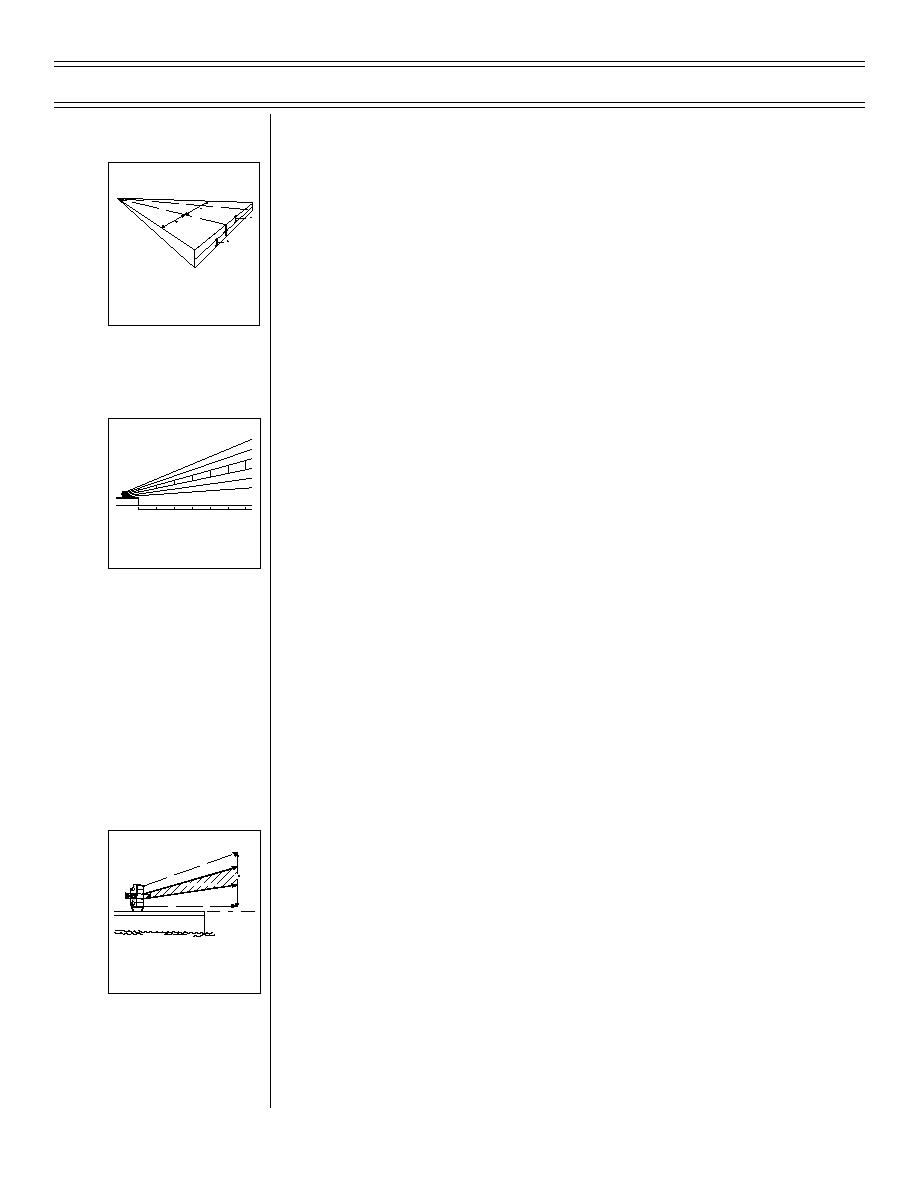
CQFP-01
Field Carrier Landing Practice (FCLP)
D.
Operation
Sg 1, fr 6
1.
Optical coverage
20
3/4
20
3/4
a.
Vertical plane: plus or minus 3/4-degree from
optimum glideslope
OPTICAL COVERAGE
OF THE FRESNEL
LENS SYSTEM
b.
Horizontal plane: 40 degrees (20 degrees on
either side of center)
c.
Only one cell is visible at any time
2.
Glideslope geometry
Sg 1, fr 7
PM
0F
~90
a.
Cell thickness - the thickness of each cell
M
0FP
~80
FPM
36.2'
~700
27.1'
M
~600FP
18.1'
decreases from 27 ft at
9'
~500FPM
2.2'
3/4 of a mile to 2.2 ft at the ramp
RAMP
1/4mile
1/2mile
3/4mile
1mile
11/4mile
11/2mile
LensThickness
14.9'
45.2'
90.4'
135.6'
180.8'
GLIDESLOPE
b.
Rates of descent - flying a constant “ball high”
glideslope results in approximately 800-900 fpm
VSI while a “ball low” results in a flatter
500-600 fpm VSI
3.
Applications
a.
At the normal altitude for the 90-degree position
(450 ft AGL), a deep 90-degree position will
result in being long in the groove and
subsequent low start (low ball or no ball—
“Clara”)
b.
At the normal altitude for the 90-degree position
Sg 1, fr 8
(450 ft AGL), a close 90-degree position will
AboveOptimum
Glideslope
result in a short groove length and a high ball or
1.5
OnOptimumGlideslope
“Clara” high start
BelowOptimum
Glideslope
NOTE: An improper 180-degree position will
ABOVE, ON, AND
require adjustments in AOB and/or rate of
BELOW OPTIMUM
GLIDESLOPE
descent to arrive at the proper position on
glideslope and centerline.
(7-01) Original
Page 1-6



 Previous Page
Previous Page
